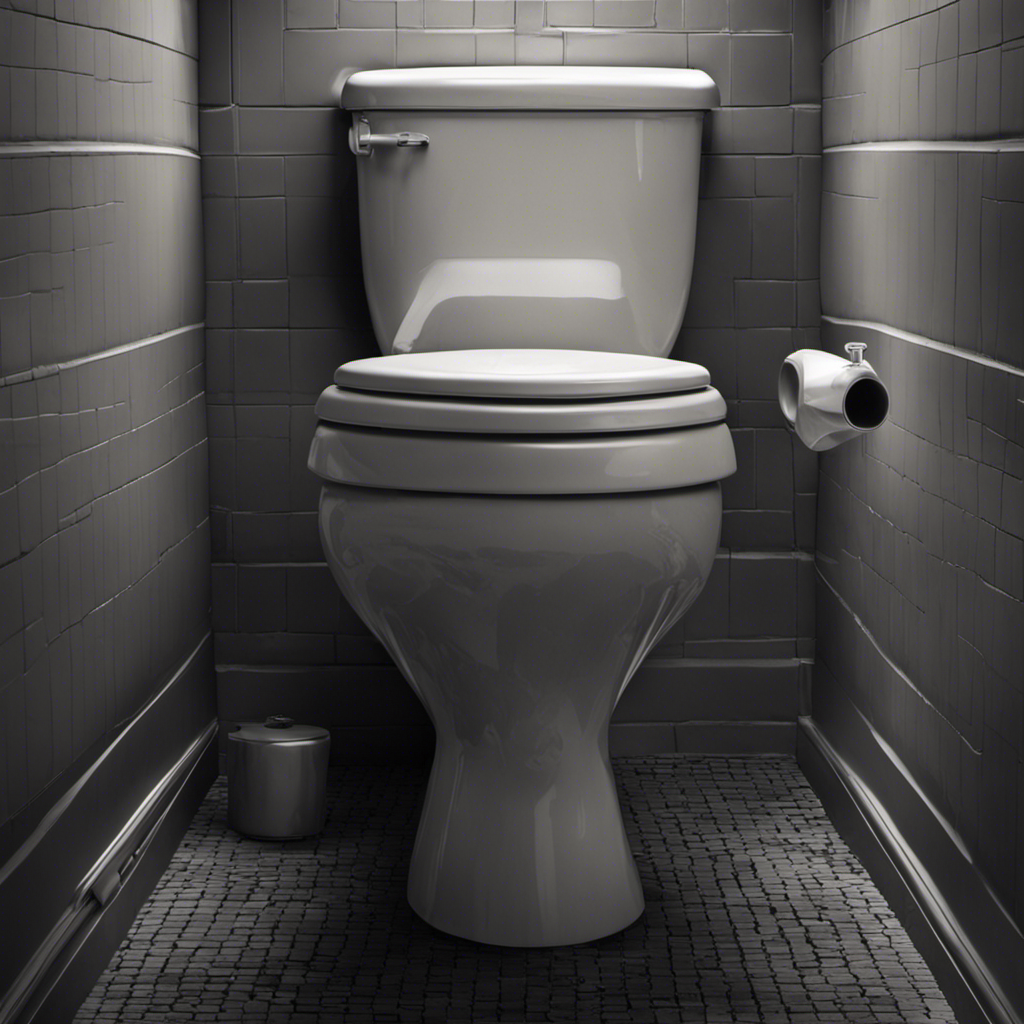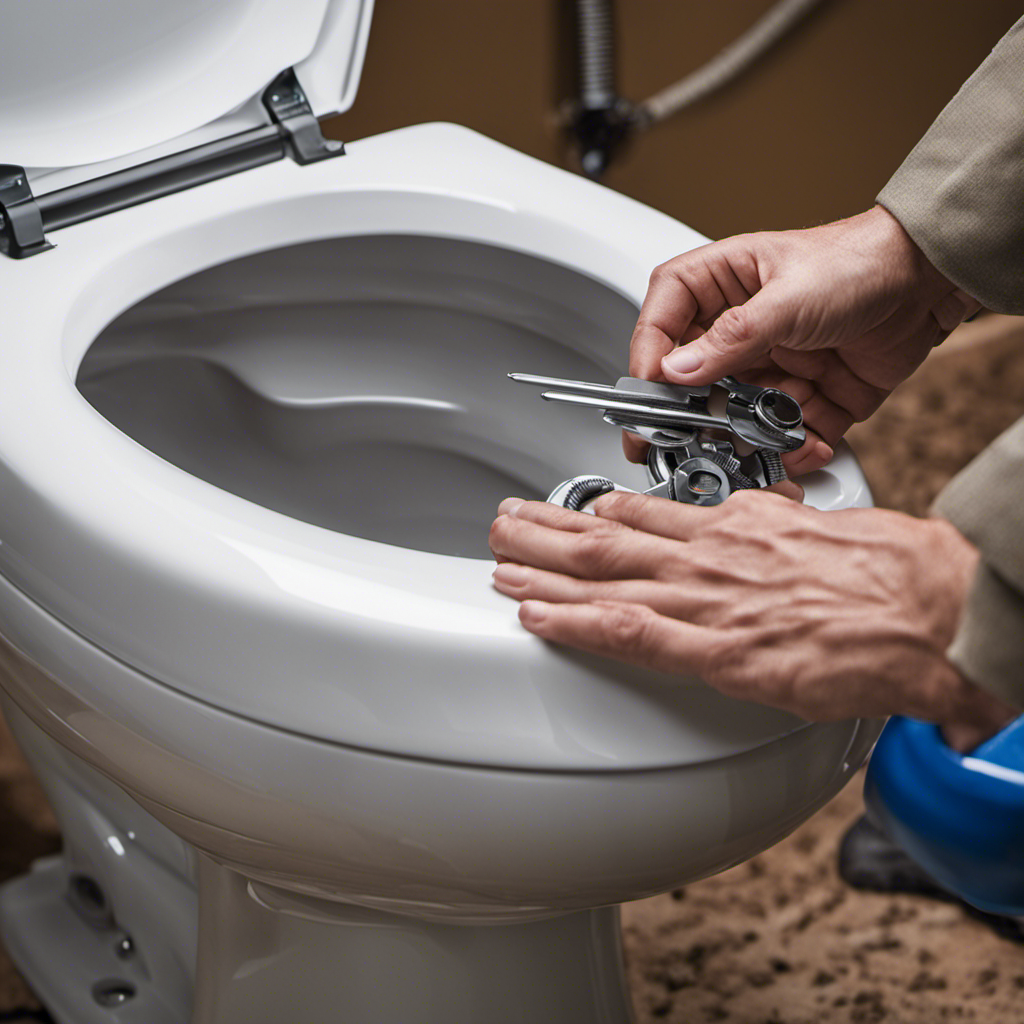Is it possible to flush cardboard from toilet paper rolls?
This is a question many of us have pondered while standing in front of the toilet. In this article, we will explore the environmental impact of flushing toilet paper cardboard, the potential risks it poses to our sewer systems, and the proper disposal methods.
We will also discuss if there are any biodegradable alternatives to flushing cardboard.
So, let’s dive in and find out whether we should be flushing our toilet paper cardboard or not.

Key Takeaways
- Flushing toilet paper cardboard contributes to waste generation and pollution.
- Improper disposal of cardboard can lead to clogs in plumbing systems and damage to sewer systems.
- Recycling toilet paper cardboard is a more sustainable option that reduces the demand for new materials and helps protect the environment.
- Proper disposal methods, such as composting or recycling, promote sustainability and reduce waste.
Environmental Impact of Flushing Toilet Paper Cardboard
While flushing toilet paper cardboard may seem convenient, it’s important to consider the environmental impact it has. Toilet paper packaging, often made of cardboard, contributes to waste generation when disposed of improperly. This waste can end up in landfills, taking up valuable space and potentially releasing harmful toxins into the environment.
Recycling options for toilet paper packaging exist and should be utilized to minimize the impact on the environment. By recycling cardboard packaging, we can reduce the need for raw materials and energy-intensive production processes associated with creating new packaging. Additionally, recycling cardboard helps to conserve resources and reduce greenhouse gas emissions.
It’s crucial that we prioritize recycling options for toilet paper packaging to reduce our environmental footprint and promote a sustainable future.
Can Flushing Toilet Paper Cardboard Cause Clogs
Flushing toilet paper cardboard can potentially cause clogs in our plumbing system. While it may seem convenient to flush cardboard down the toilet, it poses several risks that can lead to costly plumbing issues. Here are three reasons why flushing toilet paper cardboard isn’t recommended:
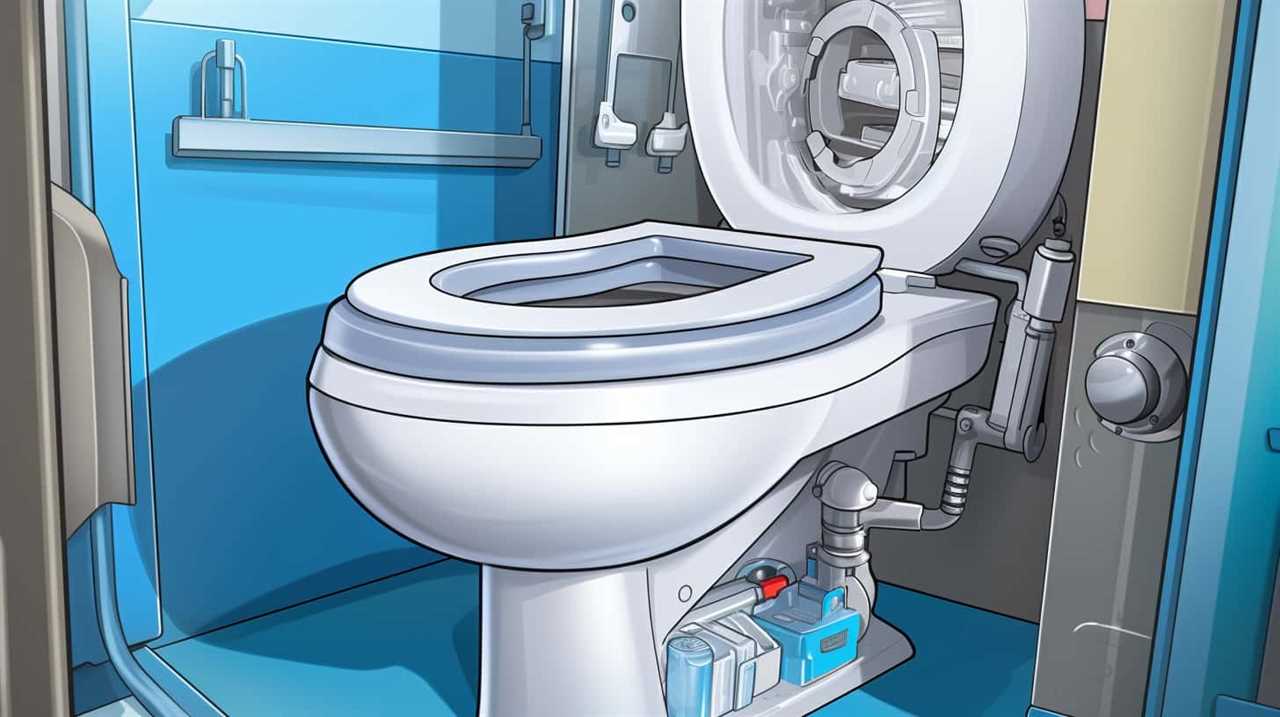
- Clogging: Toilet paper cardboard doesn’t disintegrate as easily as regular toilet paper. It has a higher chance of getting stuck in the pipes, causing blockages that can lead to backups and overflows.
- Damage to the plumbing system: The rigid nature of cardboard can cause it to get lodged in the bends and curves of the pipes. This can result in reduced water flow, increased pressure, and potential damage to the plumbing system.
- Environmental impact: Flushing cardboard contributes to unnecessary waste and pollution. Instead of flushing, recycling cardboard is a more sustainable option. Recycling reduces the demand for new materials, conserves resources, and helps protect the environment.
Is Toilet Paper Cardboard Biodegradable
Toilet paper cardboard’s biodegradability is a key factor to consider when evaluating its environmental impact and proper disposal. The biodegradability of toilet paper packaging refers to its ability to break down and decompose naturally over time, without leaving behind harmful residues or causing pollution.
Fortunately, toilet paper cardboard is typically made from recycled materials and is biodegradable. This means that when properly disposed of, it can be broken down by natural processes, such as composting, without harming the environment. Composting toilet paper cardboard is an effective way to ensure its biodegradability. By placing it in a compost bin along with other organic waste, the cardboard can decompose and contribute to the creation of nutrient-rich soil.
Transitioning to the next section, let’s now explore the proper disposal methods for toilet paper cardboard.
Proper Disposal Methods for Toilet Paper Cardboard
To properly dispose of toilet paper cardboard, we can recycle it in designated recycling bins. Recycling options for toilet paper cardboard are widely available and contribute to reducing waste and promoting sustainability. Here are three key methods for the proper disposal of toilet paper cardboard:
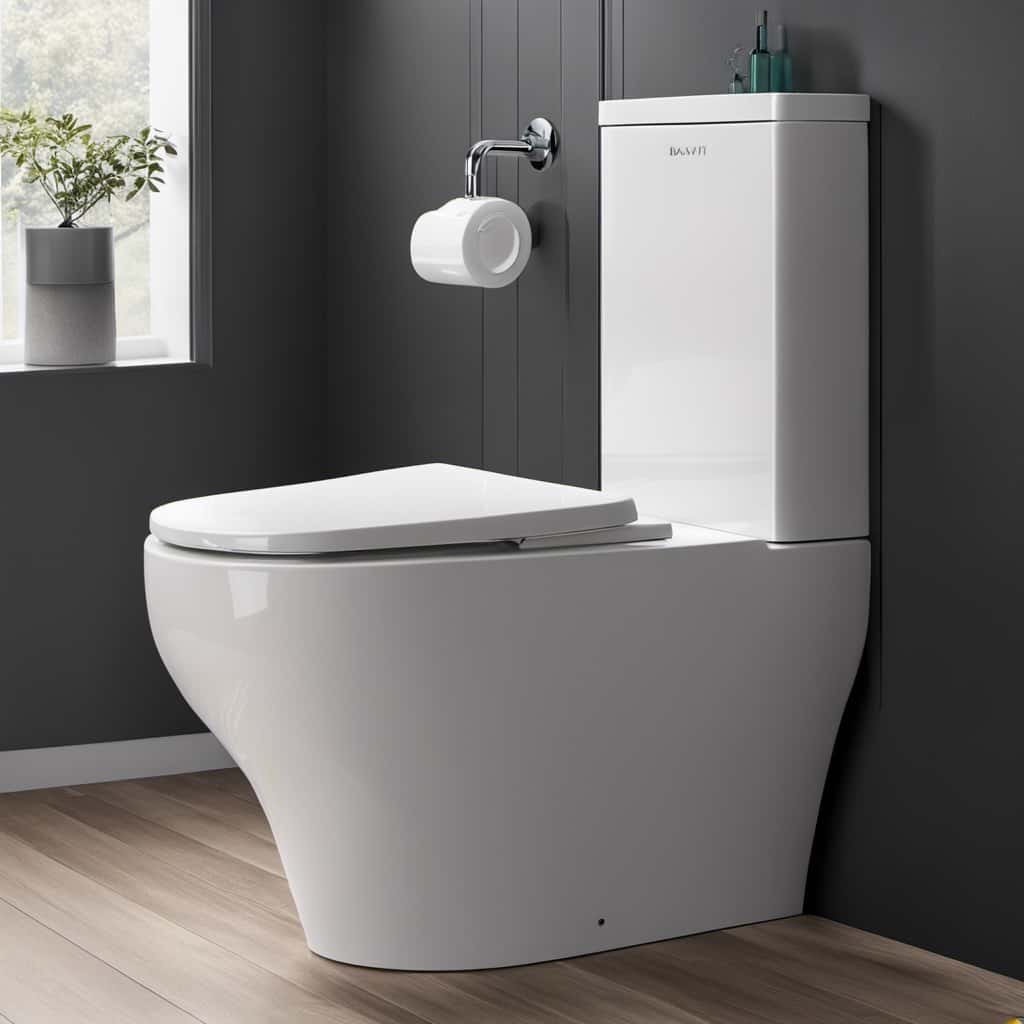
- Recycle: Place the cardboard in recycling bins specifically designated for paper and cardboard recycling. Ensure that the cardboard is clean and dry to avoid contaminating other recyclable materials.
- Compost: If you have a composting system, you can add toilet paper cardboard to your compost pile. Tear the cardboard into small pieces and mix it with other organic materials, such as food scraps and yard waste.
- Reuse: Toilet paper cardboard can be repurposed for various household uses. Cut it into smaller pieces and use it as a plant marker, drawer dividers, or even as fire starter material.
Does Flushing Toilet Paper Cardboard Affect Sewer Systems
When we flush toilet paper cardboard, it can have an impact on sewer systems. Flushing cardboard down the toilet can cause sewer system damage and contribute to water pollution. The cardboard can clog pipes and cause backups, leading to costly repairs and disruptions in the sewage system. Additionally, the chemicals used in the production of cardboard can leach into the water, contaminating it and posing a risk to aquatic life and human health. To illustrate the potential consequences of flushing toilet paper cardboard, consider the following table:
| Consequences of Flushing Toilet Paper Cardboard |
|---|
| Sewer System Damage |
| – Clogged pipes |
| – Backups |
| – Costly repairs |
| Water Pollution |
| – Contamination of water |
| – Risk to aquatic life |
| – Risk to human health |
It is important to properly dispose of toilet paper cardboard in the appropriate recycling bins or trash cans to prevent these negative effects on sewer systems and water quality.
Potential Risks of Flushing Toilet Paper Cardboard
Flushing toilet paper cardboard poses potential risks to sewer systems and water quality, particularly in terms of environmental contamination. Here are three reasons why using recycled cardboard for toilet paper can be risky:
- Clogging: Toilet paper cardboard isn’t designed to break down easily in water. When flushed, it can clump together with other debris, leading to clogs in sewer pipes. This can cause blockages and backups, resulting in costly repairs and inconvenience for homeowners.
- Impact on Water Treatment Plants: Recycled cardboard may contain chemicals, dyes, or adhesives that can be harmful to water treatment plants. These substances can interfere with the treatment process and affect the quality of treated water. Additionally, the presence of cardboard can increase the load on the treatment systems, reducing their efficiency.
- Environmental Contamination: If toilet paper cardboard ends up in water bodies, it can cause pollution. Cardboard can take a long time to break down, releasing pollutants into the environment and potentially harming aquatic life.
Considering these risks, it’s advisable to dispose of toilet paper cardboard in the trash rather than flushing it to maintain the integrity of sewer systems and preserve water quality.
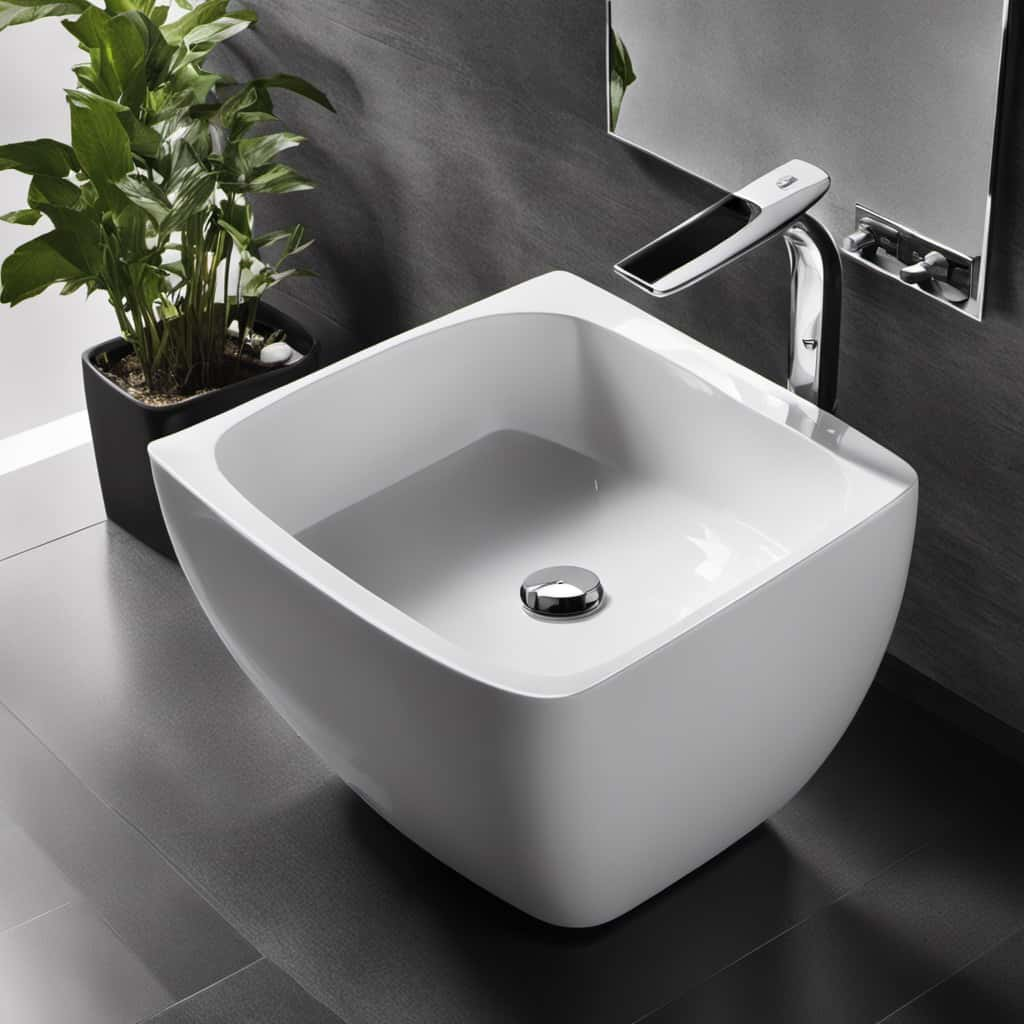
Alternatives to Flushing Toilet Paper Cardboard
After considering the potential risks of flushing toilet paper cardboard, it’s important to explore alternative methods of disposal.
Fortunately, there are several eco-friendly options available.
One alternative is to switch to toilet paper alternatives such as bidets or wet wipes, which eliminate the need for toilet paper altogether. Bidets use water to cleanse, while wet wipes are pre-moistened and can be easily disposed of in the trash.
Another option is to recycle the cardboard. Many recycling centers accept toilet paper cardboard rolls, as they can be turned into new paper products. Simply remove any remaining toilet paper, flatten the cardboard, and place it in your recycling bin.
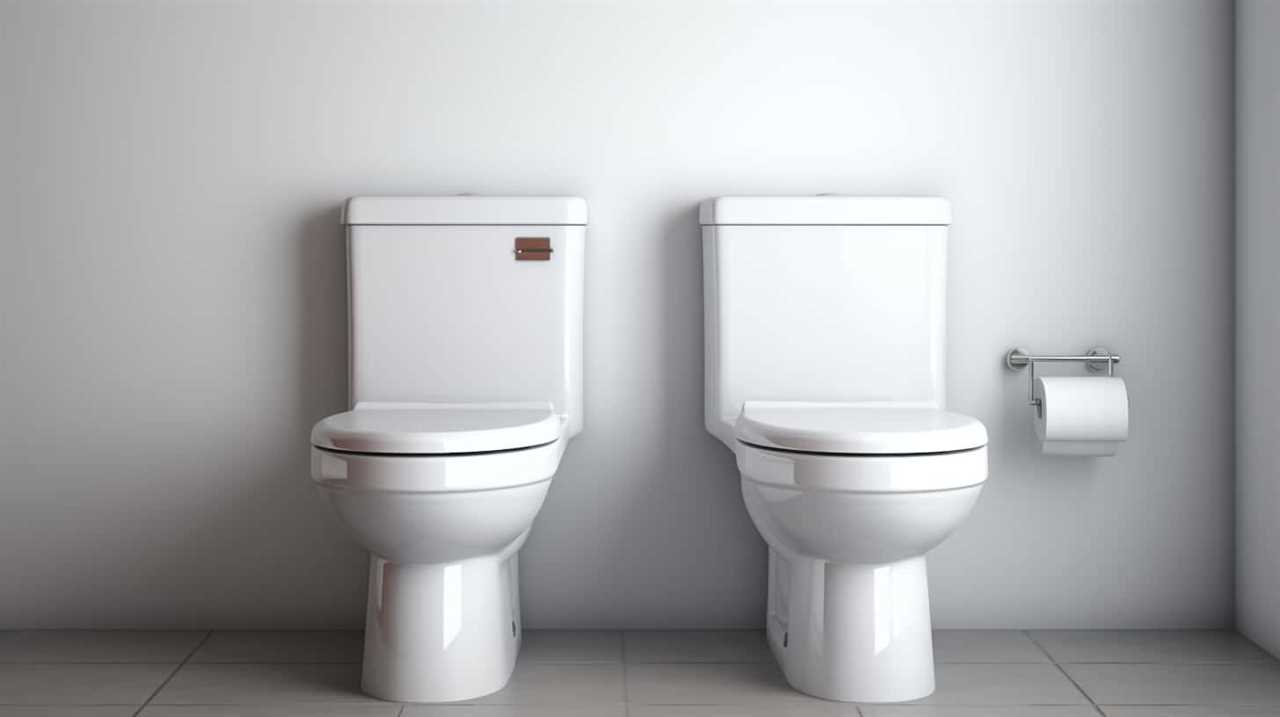
Conclusion: To Flush or Not to Flush Toilet Paper Cardboard
Let’s weigh the pros and cons before deciding whether to flush toilet paper cardboard. Here are three key points to consider:
- Environmental Impact: Flushing toilet paper cardboard may seem convenient, but it can contribute to clogging in the plumbing system. On the other hand, recycling the cardboard offers a more sustainable solution, reducing waste and conserving resources.
- Cost and Convenience: Flushing toilet paper cardboard eliminates the need for disposal, saving time and effort. However, recycling options provide an opportunity to support sustainability initiatives and may even offer financial incentives in some areas.
- Personal Preference: Some individuals may prefer the convenience of flushing toilet paper cardboard, while others may prioritize environmental responsibility and opt for recycling.
Ultimately, the decision to flush or recycle toilet paper cardboard depends on individual priorities and available recycling options. It’s essential to consider both convenience and the larger impact on the environment.
Conclusion
Ironically, while it may seem convenient to flush toilet paper cardboard, it can have detrimental effects on the environment and sewer systems. Flushing cardboard can lead to clogs and potential damage to our plumbing.
Despite its biodegradable nature, proper disposal methods should be followed to ensure minimal impact on our surroundings. Let’s reconsider our flushing habits and opt for alternative methods of disposal to protect our planet and avoid unnecessary risks.




